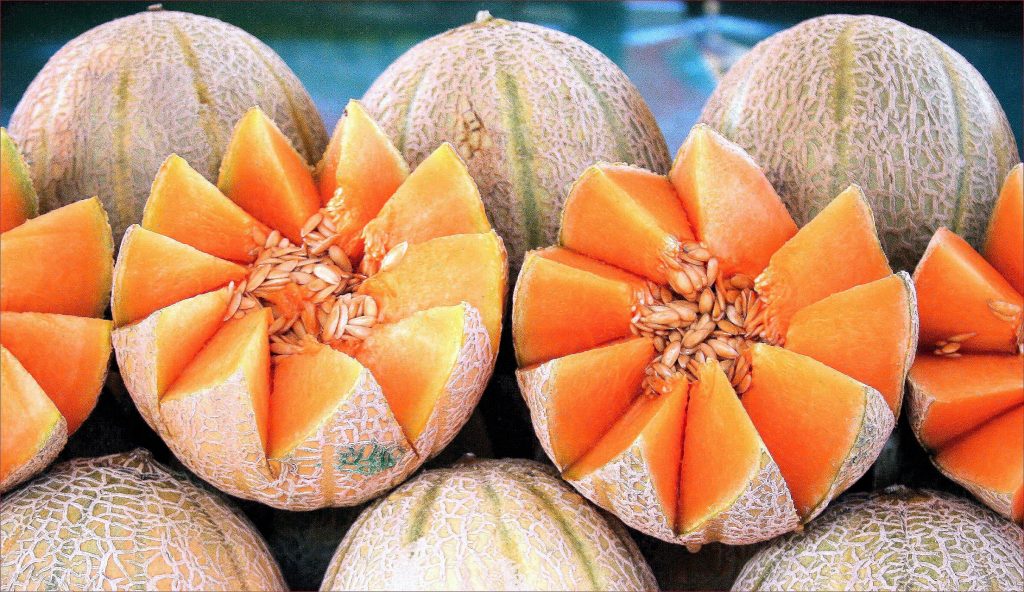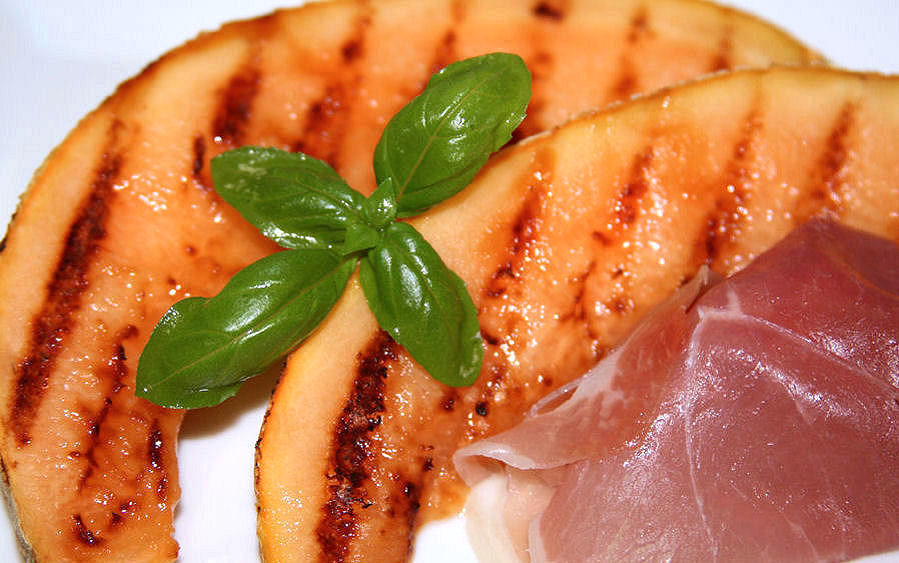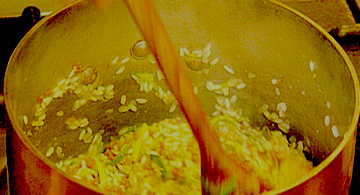
Cantaloupe and muskmelon are not the same melon. With distinctive character, each melon has its own flavor and texture profile. Both are a rich source of vitamins. Tuscan melon is a term given to the European cantaloupe, Cucumis melo cantalupensis. Grown during warm weather, the European cantaloupe it quite distinctive in shape and flavor from the muskmelon. The true summer cantaloupe is oval in shape with deep vein tracts, gray-toned webbing or netting and a hard rind. It is firmer and slightly less sweet than muskmelons which are often referred to as cantaloupe in the United States. When ripe, the European cantaloupe often contains less juice than muskmelon, has darker salmon-orange colored flesh and is very fragrant. It tends to be savory in taste while the muskmelon is sweet in taste.
The Italian Ministry of Agriculture lists the following Cucumis melo varieties as being either native to Italy or traditional food products of Italy: melone di Altavilla, melone del Napoletano (from Campania), melone tipico di San Matteo Decima (from Emilia-Romagna), melone di Casteldidone, melone di Viadana (from Lombardy), melone di Isola Sant’Antonio (from Piedmont), melone di giallo (also called melone d’ inverno di Paceco), melone della Val di Cornia (from Tuscany), melone in asciutto (also called melone de jerru from Sardinia), melone invernale giallo cartucciaru, verde purceddu e melone purceddu d’ Alcamo (from Sicily), melone del Delta polesano, melone precoce Veronese (from the Veneto). Several European cantaloupe varieties (Proteo, Stargate, Tiburzi, C-5, Leonardo, Perseo, Globstar, Raptor, Thales, Tuareq, Cassini, and Caldeo) are commercially grown in the Emilia-Romagna, Campania, Sicily, Puglia, and Lazio regions of Italy. Thanks to the difference in climate throughout the Italian peninsula, these melons are available from May through October in the produce markets. The Perseo, Proteo, and Leonardo varieties are grown in Hungary and the Globstar and Charentais varieties are very popular in France. Globstar variety is grown in Morocco and Spain. *The photo above displays cantaloupes in the outdoor market in Torino.

Muskmelon cultivars, Cucumis melo reticulatus or Cucumis melo melo var. cantalupensis, are often called cantaloupes although they are members of the muskmelon species.
Grown in the United States and Canada, muskmelon is rounder in shape with very shallow vein tracts and pronounced beige-colored webbing all over its surface. Muskmelons tend to be a lighter orange in color, slightly softer in texture with sweet, juicy flesh. *The photo on the left is of a muskmelon grown in the United States and sold in New York City.
Cantaloupes and muskmelons are a rich source of Vitamin A, one of the highest among fruits. Remember Vitamin A is a powerful antioxidant and is essential for eye health. They contain high levels of Zeaxanthin, an important carotenoid for retinal macula lutea, and can help protect the eye from macular degeneration. They also contain antioxidant flavanoids such as beta-carotene and good levels of Vitamin B-complex, Vitamin C, manganese, and potassium.








